Lecture 9: Symbiosis Microbiota
1/36
There's no tags or description
Looks like no tags are added yet.
Name | Mastery | Learn | Test | Matching | Spaced |
|---|
No study sessions yet.
37 Terms
What does symbiosis mean?
The living together between organisms. Also the interaction and possibly co-evolution with associated microbes and organisms.
What is mutualism?
Both organisms in the relationship benefit.

What is commensalism?
One organism benefits and the other is unaffected in the relationship.

What is parasitism (including pathogens)?
One organism benefits and the other is harmed in the relationship

What is the role of endosymbiosis in the origin of mitochondria?
Primitive prokaryotic cells existed in which one prokaryotic cell engulfed another prokaryotic cell but did not break it down
The two cells co-existed and the ingested aerobic bacterium gave rise to mitochondria
Mitochondria evolved from an O2-respiring bacterium
What is the role of endosymbiosis in the origin of chloroplast?
Primitive prokaryotic cells existed in which one prokaryotic cell engulfed another prokaryotic cell but did not break it down
The two cells co-existed and the ingested photosynthetic bacterium gave rise to chloroplast
Chloroplast evolved from an oxygenic phototrophic bacterium
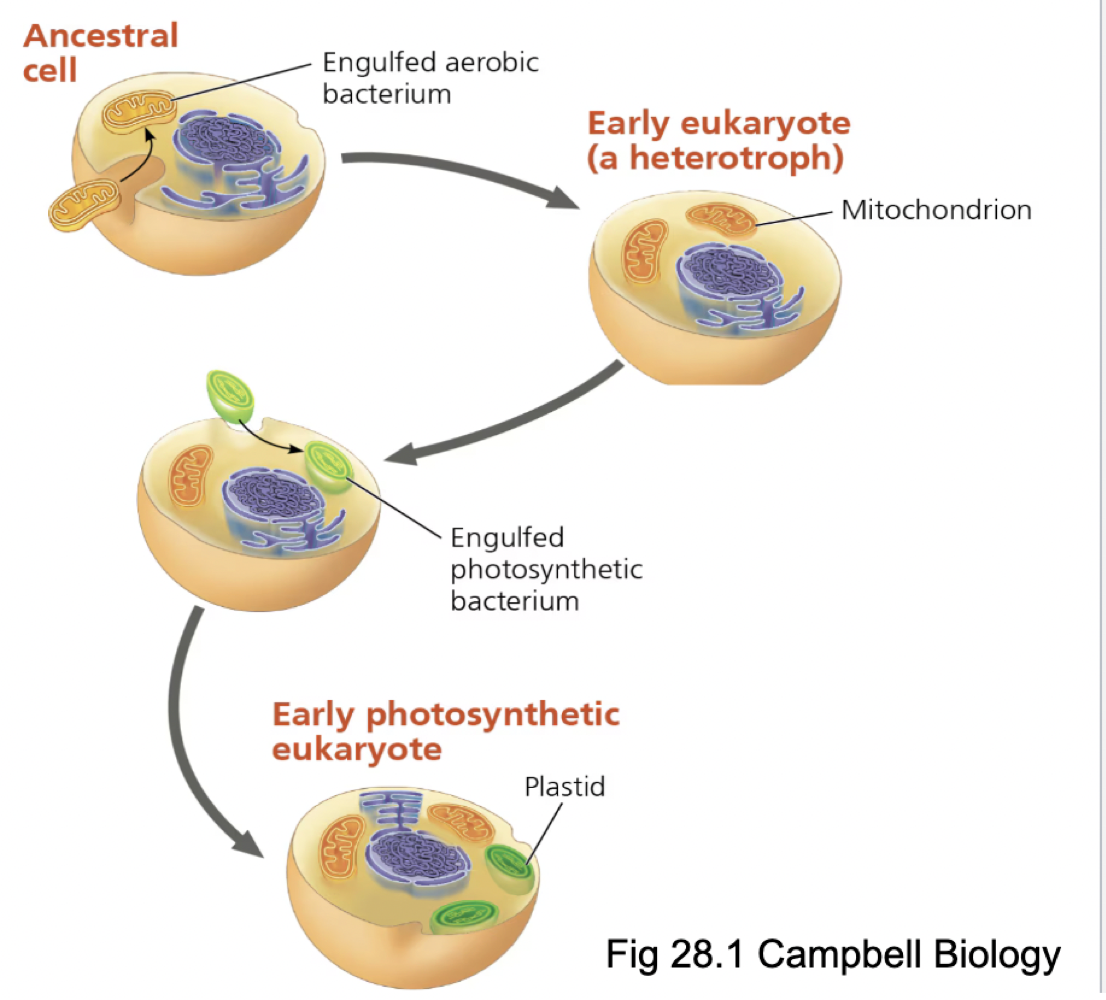
What is endosymbiosis?
Microbes that reside within the cells of an organism.
Endophytic Rhizobium bacterial live inside cells of specific plants (e.g. legumes; bean family) in specialized root nodules
What is microbiota?
The ecological community of microorganism associated with a host.
Plant microbiota include communities of microorganism associated with a host
Human microbiota refers to microbes living in or on the human body
Gut microbiota lives in the lumen of the gut (topologically “outside” of the body)
A healthy human microbiome does not have intracellular bacteria (endosymbionts)
Endosymbionts are found in certain diseases
What are Rhizo bacterias?
Rhizo = roots → bacteria that are associated with the roots
Some are endosymbiotic and some are free living
What are microbiome biota?
Microbiota that live in or on the mammal’s body.
What type of relationship do plants and soil microbes have?
Plant and soil microbes have a mutualistic relationship.
What is the role of plant growth-promoting rhizobacteria (PGPR)?
Produce antibiotics that protect plants from diseases
Help increase nutrient availability for plants
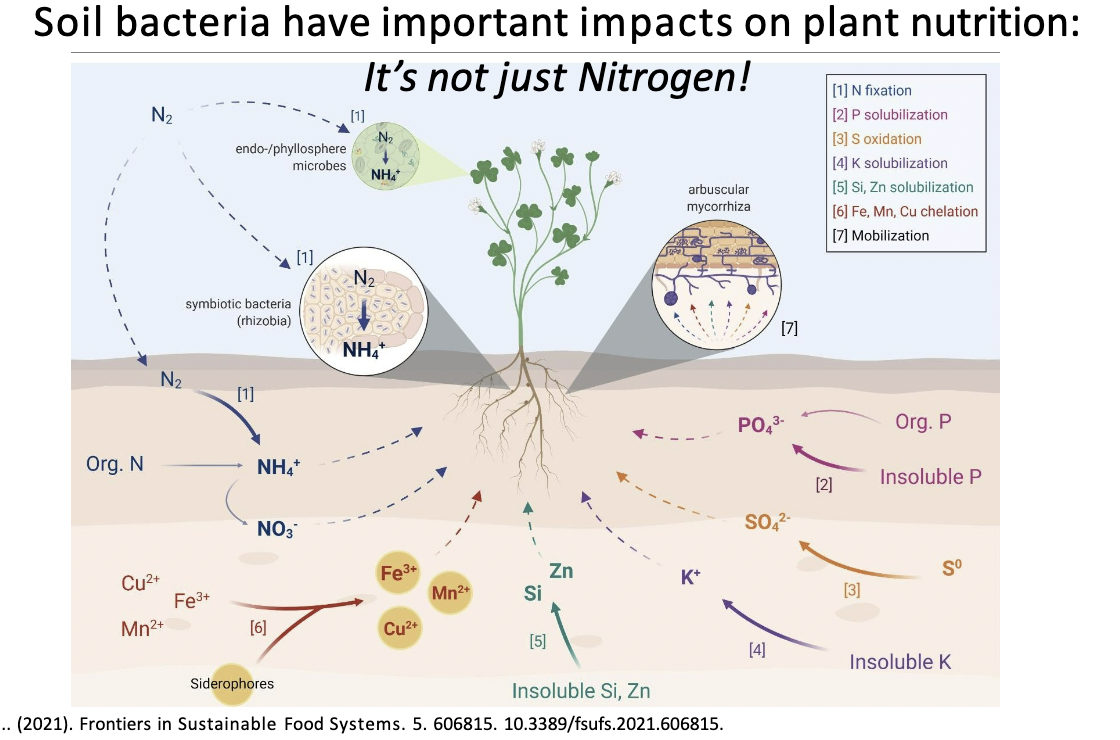
What are arbuscular mycorrhizal fungi (AMF)?
Fungi that has a mutualistic symbiotic relationship with most plants which increases nutrient availability for both fungi and plant.
*Occurs through AM colonization
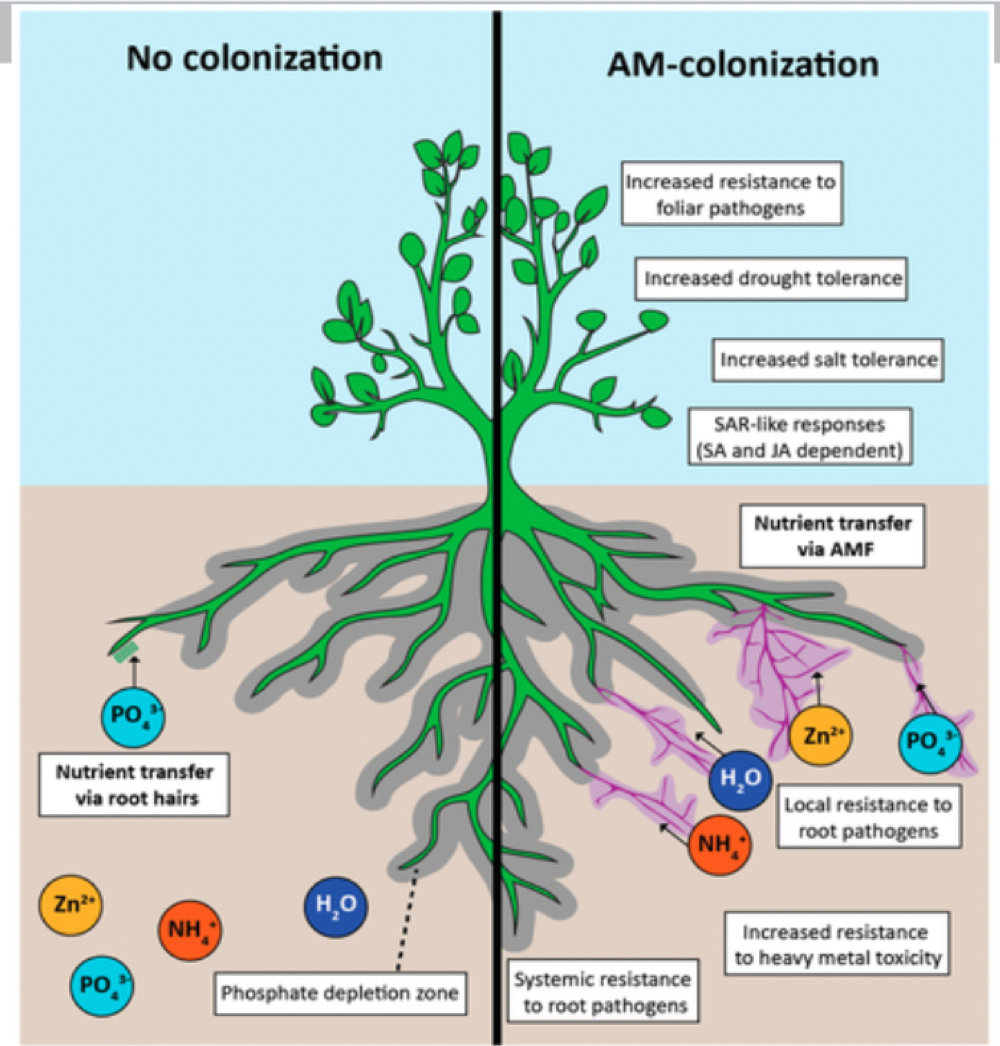
What do plants need nitrogen for?
Protein synthesis and nucleic acid synthesis
Why do plants need to go through nitrogen fixation?
Nitrogen exists in different forms in the nitrogen cycle and some forms are not readily available for plants to use.
The most common form is atmospheric form (N2) but it is not able to be directly used for plants, therefore the plant must go through nitrogen fixation to make this nitrogen usable.
What is nitrogen fixation?
The process of transforming nitrogen and nitrogen-containing compounds into NH4+ and NO3-, which is a usable form for plants through the actions of soil bacteria (nitrogen fixing bacteria & nitrifying bacteria).
What is the role of the bacteria of the rhizobium species in nitrogen fixation?
Nitrogen fixing bacteria generates NH4+ from N2; Ammonifying bacteria can also generate NH4+
NH4+ can be used directly by the plant or be used to transform to NO3-
Nitrifying bacteria generate NO3- from NH4+
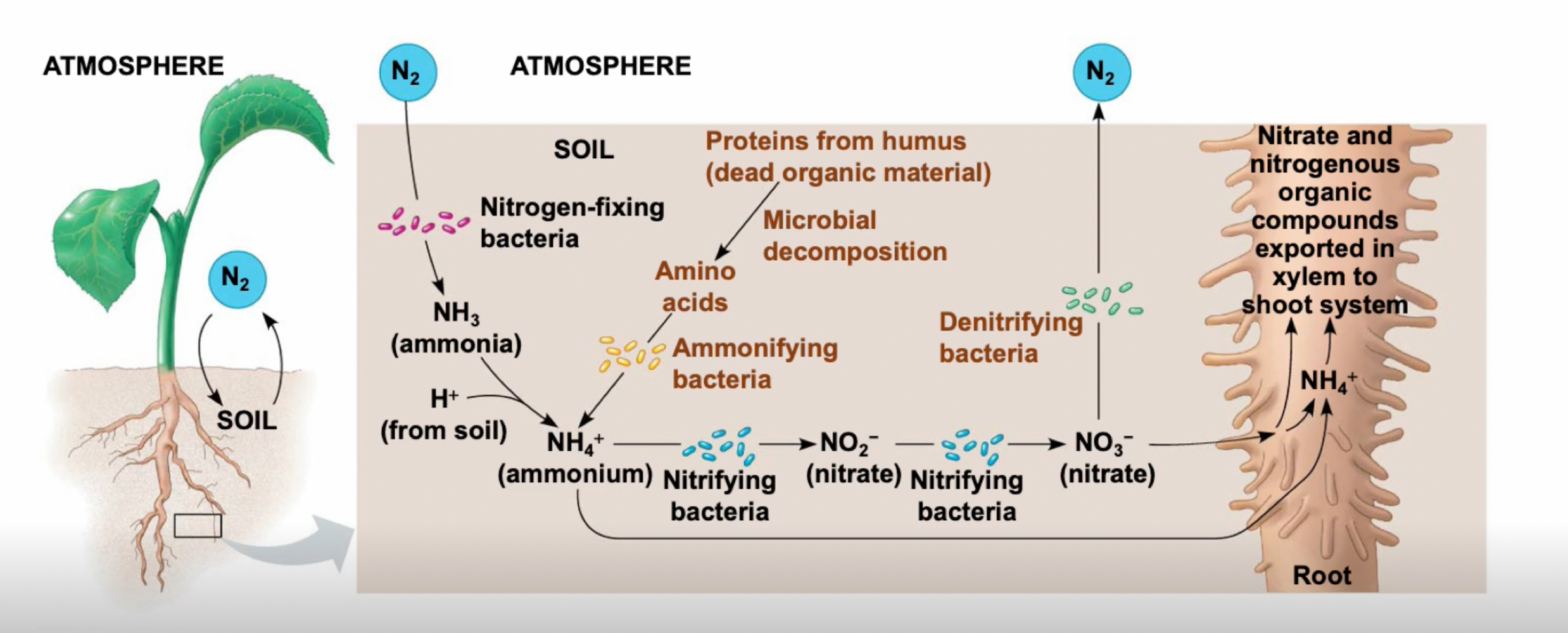
What is the Legume-Rhizobium symbiosis?
The most efficient mutualism between plants (e.g. beans, peanuts, peas) and N2 fixing bacteria
Mutualism because:
Rhizobium bacteria obtains sugar from the plant
Plant obtains fixed nitrogen supply from the Rhizobium bacteria
Why is the Legume-Rhizobium symbiosis important in agricultural fields?
It is more effective than industrialized fertilizer because it can generate more usable nitrogen which helps restore fertilized soil.
*In fields, legume crops are rotated with other crops to restore nitrogen to the soil.
Why are root nodules formed and how is it formed?
It is formed when plants don’t have Rhizobium bacteria; by forming root nodules the plant can have Rhizobium bacteria which starts nitrogen fixation process.
Root cell use flavonoids to send out a signal in the soil
Rhizobia bacteria receives the signal and responds by secreting Nod factors (signal that the plant receives to induce nodulation)
Nodulation alters root cell activity to allow formation of root nodules which is the area that Rhizobium bacteria will reside

Why is soil bacteria important in plant nutrition?
It impacts a lot more other nutritential process other than nitrogen and most of the relationships are mutualism.
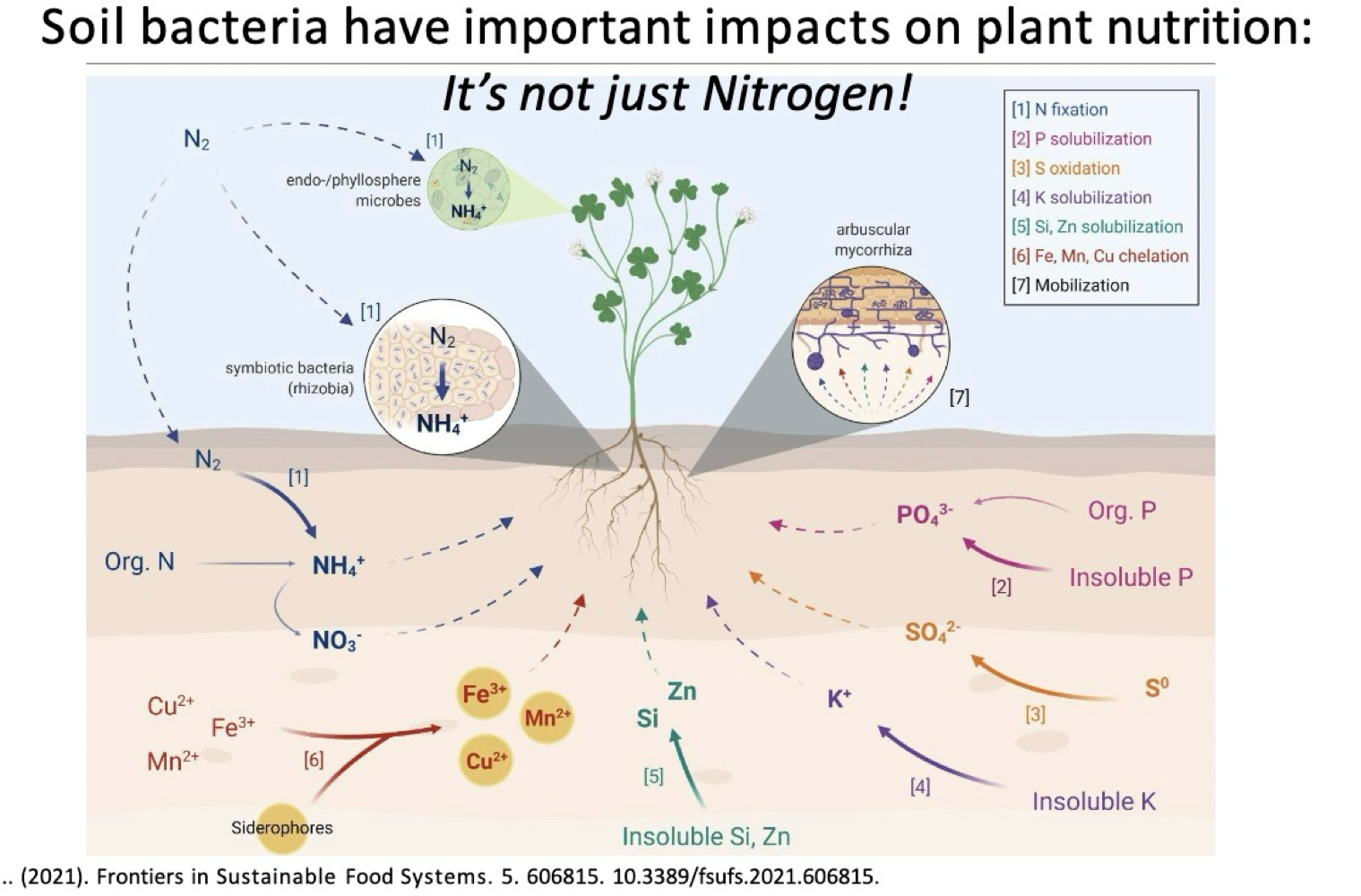
Compared to cells, do humans have less or more microorganisms in their body?
Human body has about 30 trillion cells and around 100 trillion microorganisms.
Is there variation among human microbiota?
Yes, human microbiota consists of representatives of each domain of life and is found at different sites (e.g. skin, respiratory tract, etc.)
What are the 3 main roles of gut microbiota?
Immunity: prevents colonization by pathogens by producing antimicrobial proteins & immunoglobulins
Educate immune system through interactions on the gut, lung, and skin
Stabilize gut barrier and decrease leakage
Metabolic role: caloric salvage — energy can be retrieved from indigestible food via gut microbiota
Produce short chain fatty acids (SCFAs) via fermentation of indigestible carbohydrates in the large intestine
Produce vitamin K and folate (vitamin B)
Chemical Modulator:
Participate in drug metabolism
Deconjugate bile acids
What is the gut-brain axis?
Connection between intestinal physiology and behavior. Communication between brain and gut.
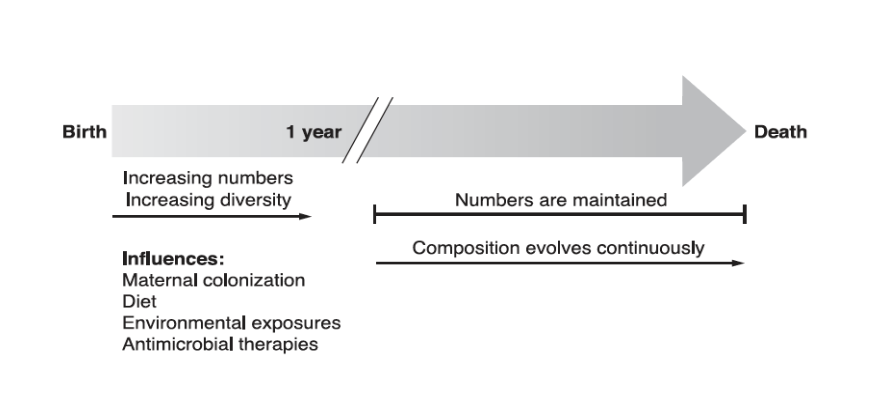
How does the nervous system, hormones (endocrine system), and chemical signals work together?
Microbiota is affected by experiences (hormonal axis & innervation)
Microbes make chemical signals that go back to the brain (neurotransmitters & SCFAs) which affect memory, emotions, and behaviors
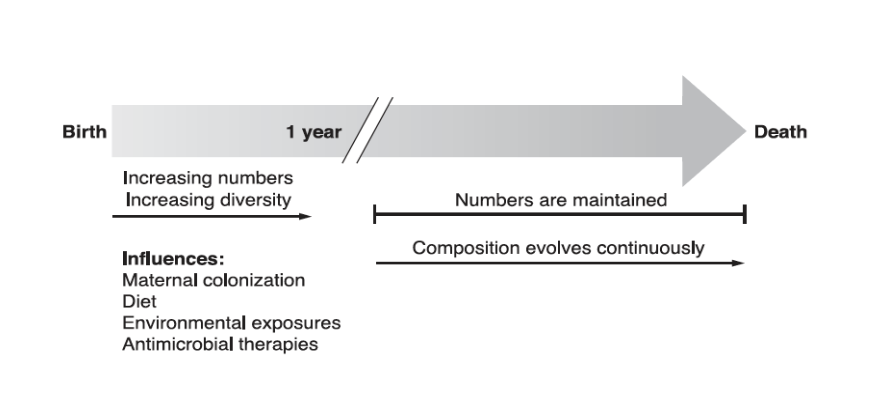
How do humans keep their gut microbiota healthy?
They maintain a diverse diet that contains sufficient fiber.
Fruits, vegetables, grains → provide prebiotics (food for microflora that are living in guts)
Fermented food → natural prebiotics
Does gut microbiota only play a role in the intestine?
No, it has influences on many other processes and physiology.
Communication of feeling full
Impact body weight/fat mass gain
Insulin resistance
Glucose intolerance
Fat storage
General inflammation

What is dysbiosis?
Microbial imbalance and increase of harmful bacteria and is associated with disease states. Having a balanced and diverse community of microbiota is healthy.
How is dysbiosis often triggered?
It is often triggered by antibiotic treatment.
What is the solution for major gut dysbiosis and describe the solution?
Fecal Microbiota Transplant (FMT)
Healthy microbiota from a donor is transplanted into an individual who is infected with major gut dysbiosis

What other symptoms or illness does FMT play a role in?
Autism, parkinson’s disease, liver disease, cardiovascular disease, obesity.
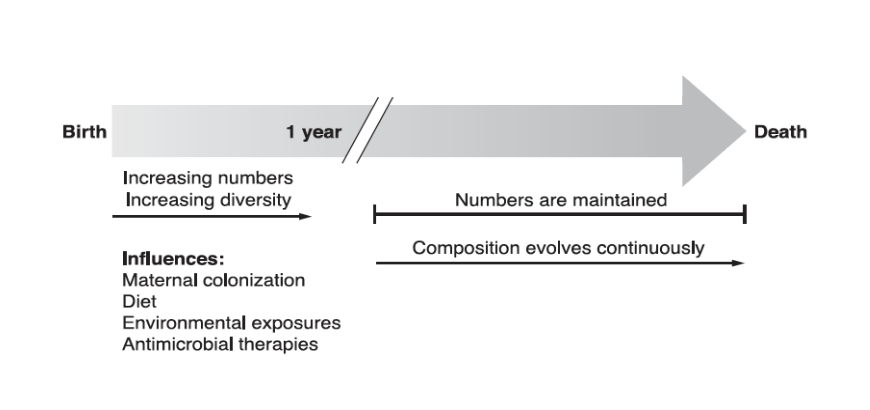
Where in the intestine is most of the gut bacteria residing in and what is dominated by?
Over 70% of all gut bacteria is in the colon.
Dominated by two phyla: firmicutes (gram-positive bacteria) and bacteroidetes (gram-negative bacteria)
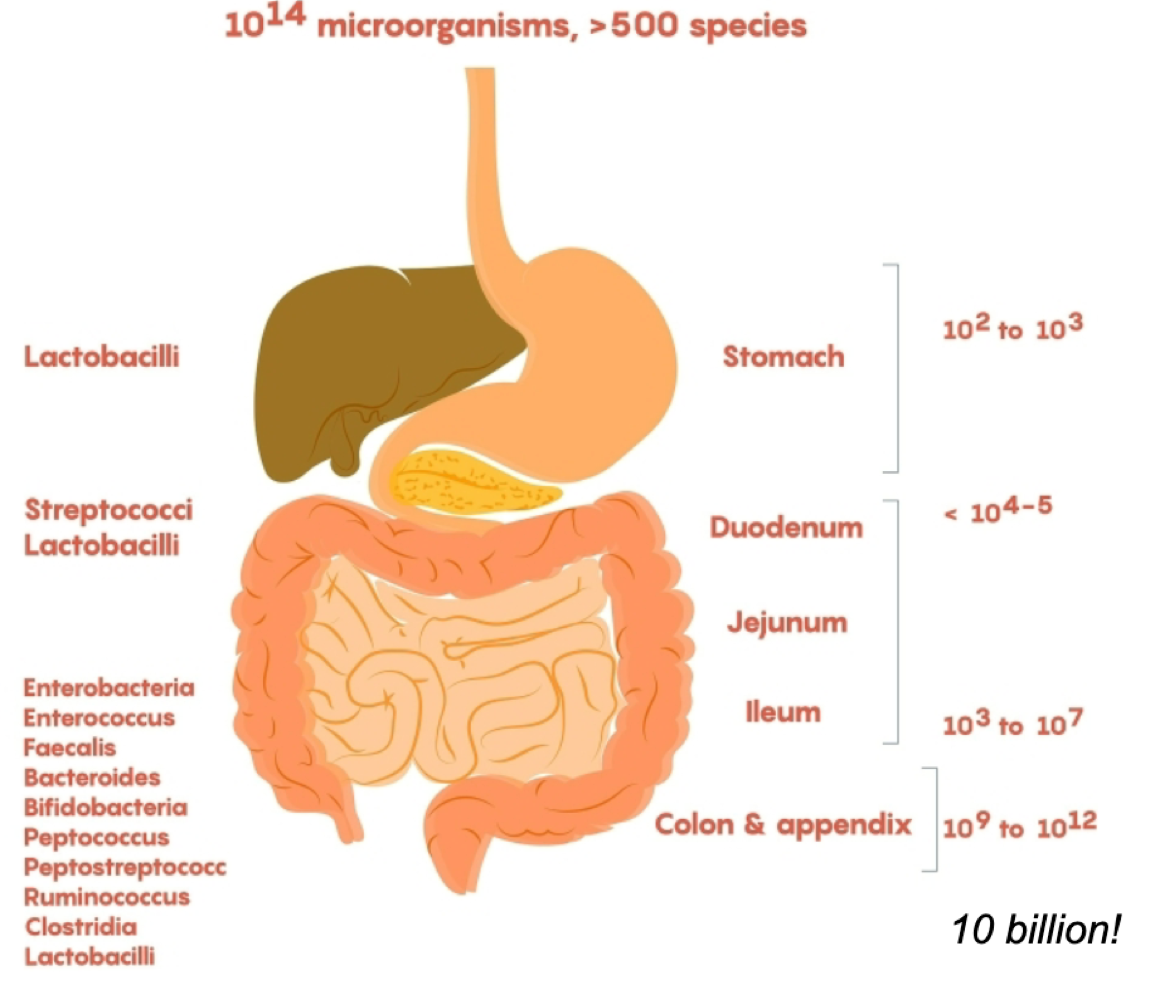
As you move from superior to inferior GI tract, what happens to bacteria abundance and diversity?
It increases from superior to inferior GI tract.
How do humans obtain their intiial supply of microbiota?
Initial exposure happens during passage through birth canal. The gut microbiota develops, influenced by moter and can be altered by environment.
How does gut microbiota change from early stages of life to the later stages?
Early stage: bacterial abundance and diversity increase
After 1 year old: final bacterial is reached and maintained by composition continues to vary and be influenced by environment
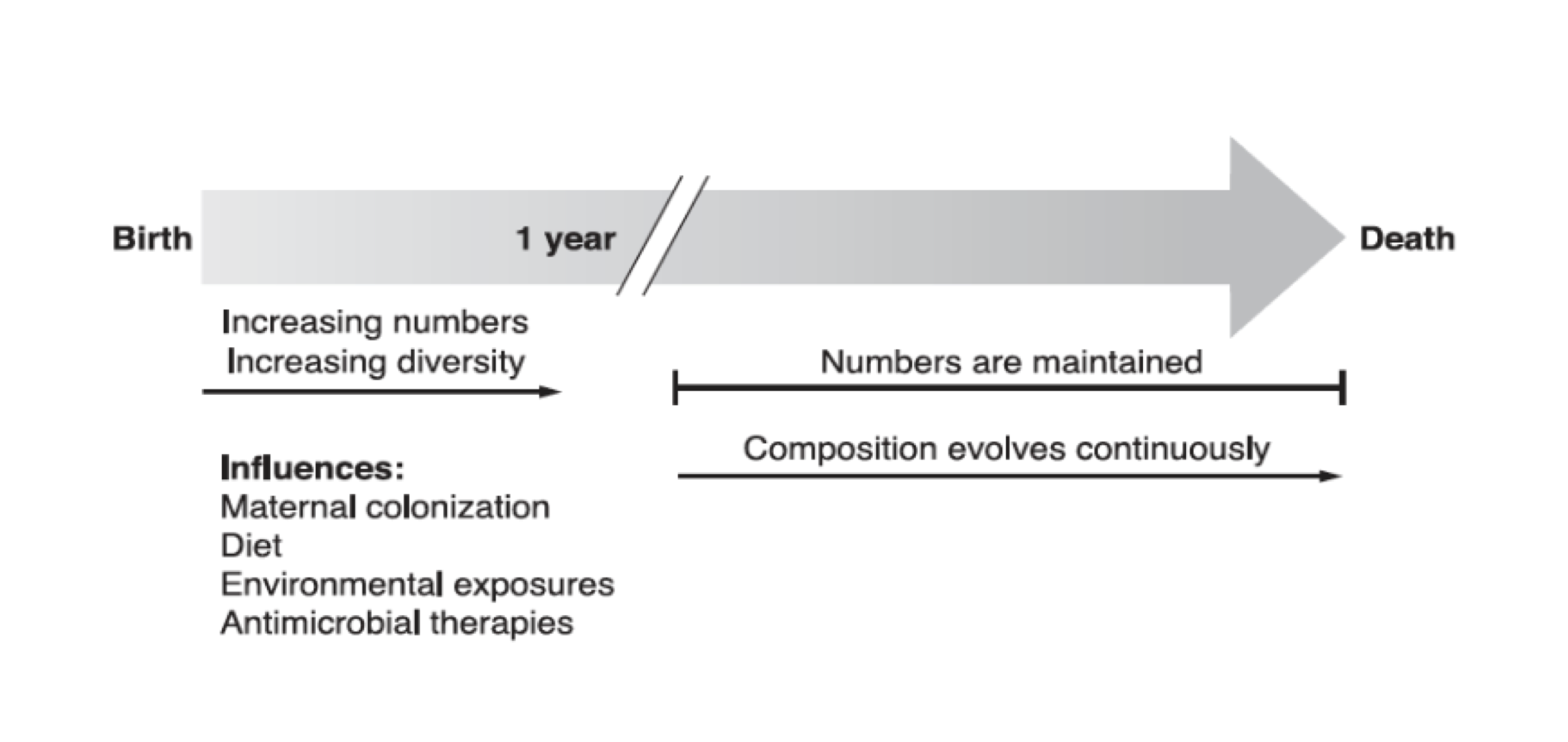
Does each person have the same microbiota composition and abundance?
Each person harbors their own distinctive pattern of gut microbial communities
Influences of host genetics and diet on both diversity and abundance